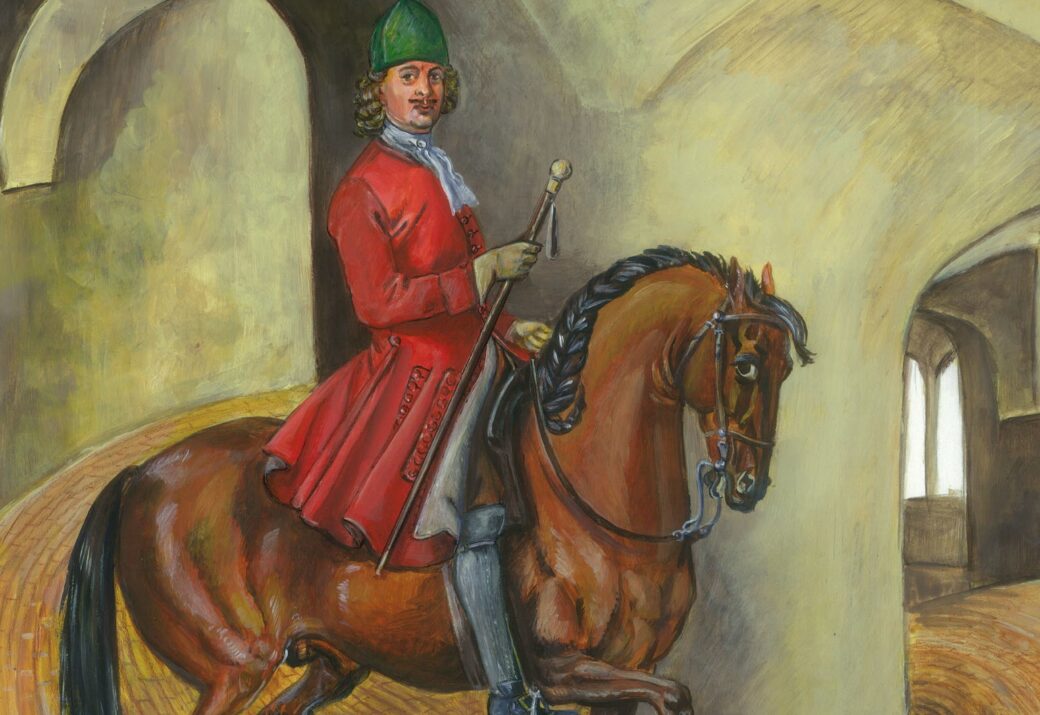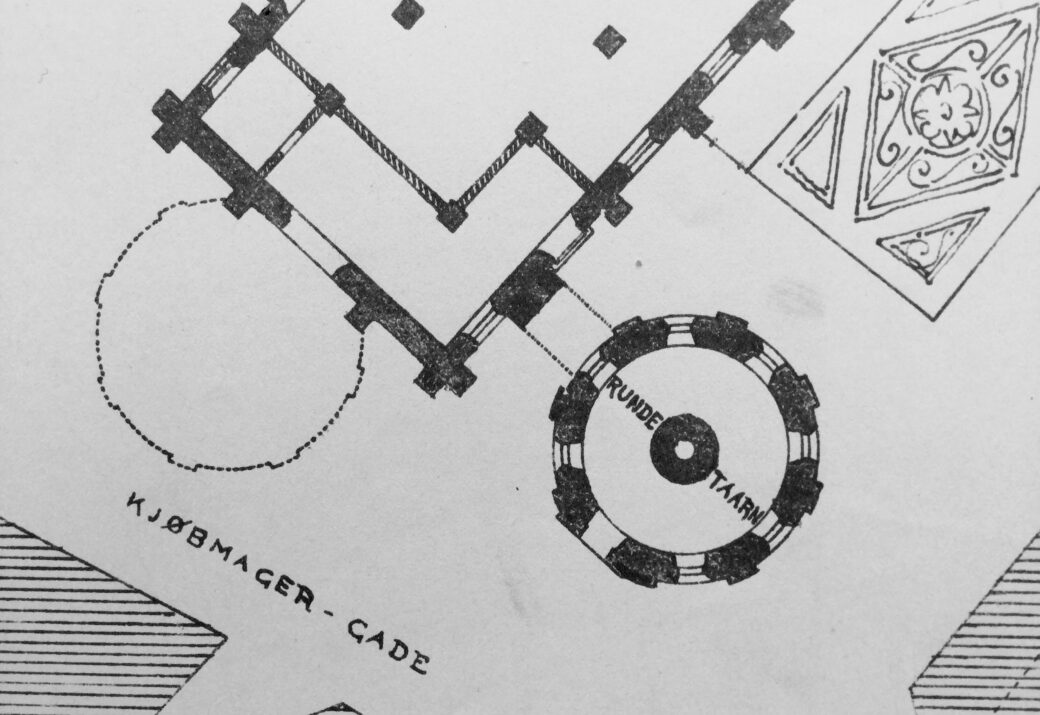This website uses cookies so that we can provide you with the best user experience possible. Cookie information is stored in your browser and performs functions such as recognising you when you return to our website and helping our team to understand which sections of the website you find most interesting and useful.
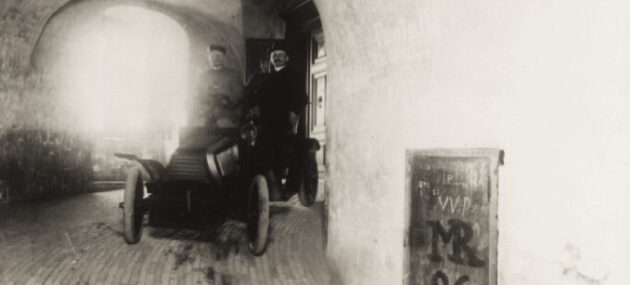
Spiral Ramp with Obstacles
It has always attracted attention that Peter the Great (1672-1725) rode up and down the Round Tower’s Spiral Ramp in October 1716, but the story about the famous ride has never been as popular as it was in the 20th-century’s newspapers. When journalists were writing about the Round Tower, they repeatedly mentioned the Russian Tsar, whose visit in this way became the benchmark for all the traffic in the tower.
“It may sound strange when one is used to the continuous upward windings of the Spiral Ramp, but it was actually once divided into not just one, but two, and perhaps even three sections”
“Not a week goes by without inquiries from people who want to do as Peter the Great did,” Poul Sørensen, who was the inspector of the Round Tower from 1968 to 1982, thus said at one point to a newspaper. “As late as last week, a party of twelve gentlemen wanted to go roller-skating up and down the tower. The following day, a man wanted to do the same on one of those newfangled roller boards. We usually say no.”
Automobile Galop
Peter the Great was also the frame of reference when the weekly magazine Illustrated News (Illustreret Tidende) in 1902 described how engineer Lorenzen from Baden in Southern Germany had set out to prove what his car was good for by driving up and down the Spiral Ramp. “We had been listening to all this talk about Peter the Tsar’s ride up through the Round Tower for such a long time,” the article recounts, “that it really feels like a relief now that this hundred-year-old record is over and done with. At any rate, the story has become less interesting since a small party drove an automobile up through the venerable tower last Sunday”.
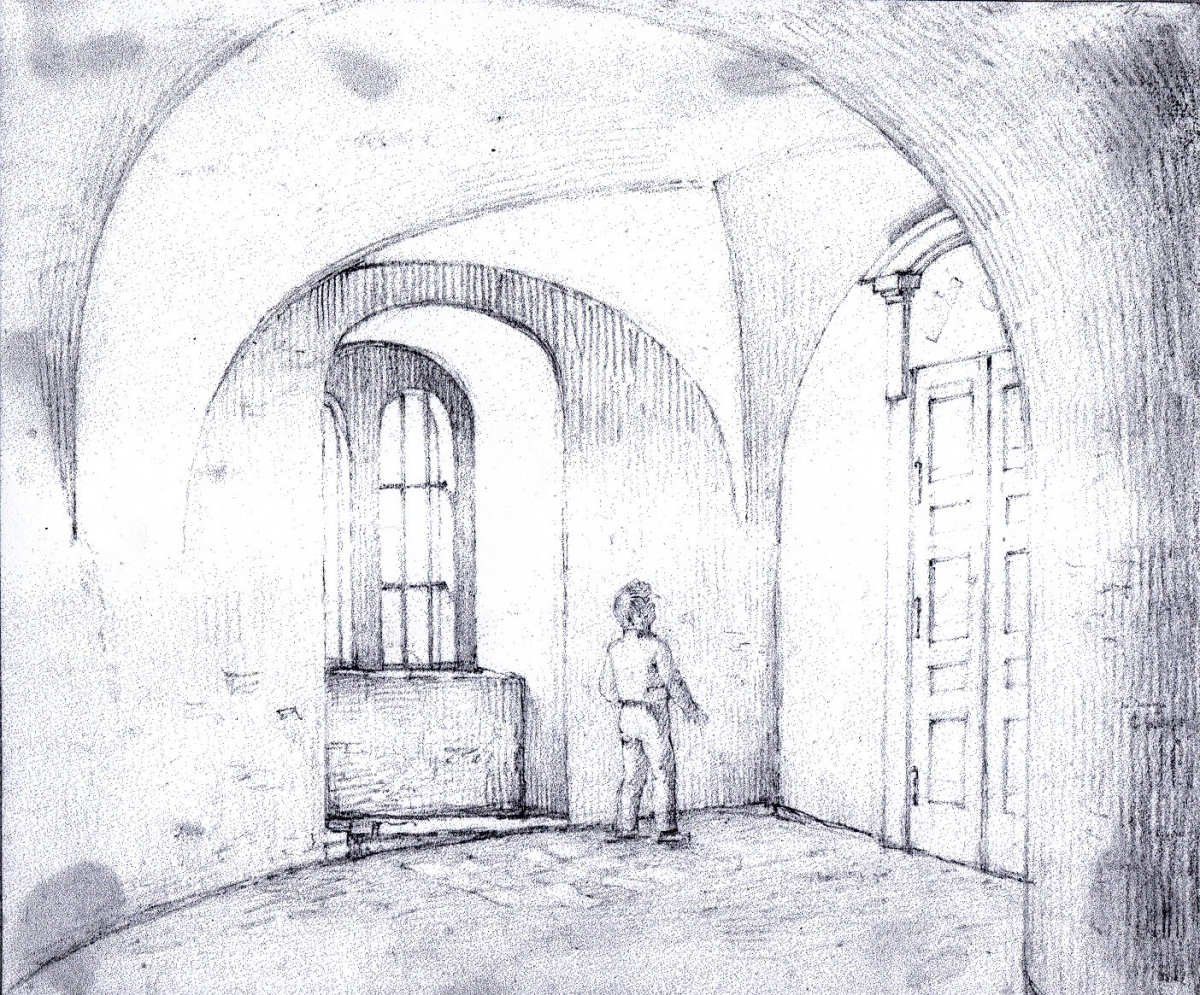
The latter is perhaps not entirely true, but it is a fact that the car ride up the Round Tower also belongs to one of the most famous stories about the tower – partly because of the catchy so-called automobile galop Up the Round Tower (Op i Rundetårn), which was composed on the occasion of the trip. The fascination with horsepower, however, should not make one forget that the Tsar was facing unfair competition, not only with regard to motorisation, but also in terms of distance.
When engineer Lorenzen drove up the Round Tower, he did not drive as far has the Tsar had ridden. He only went as far as to the “the double door that closes at the top,” the account in Illustrated News said.
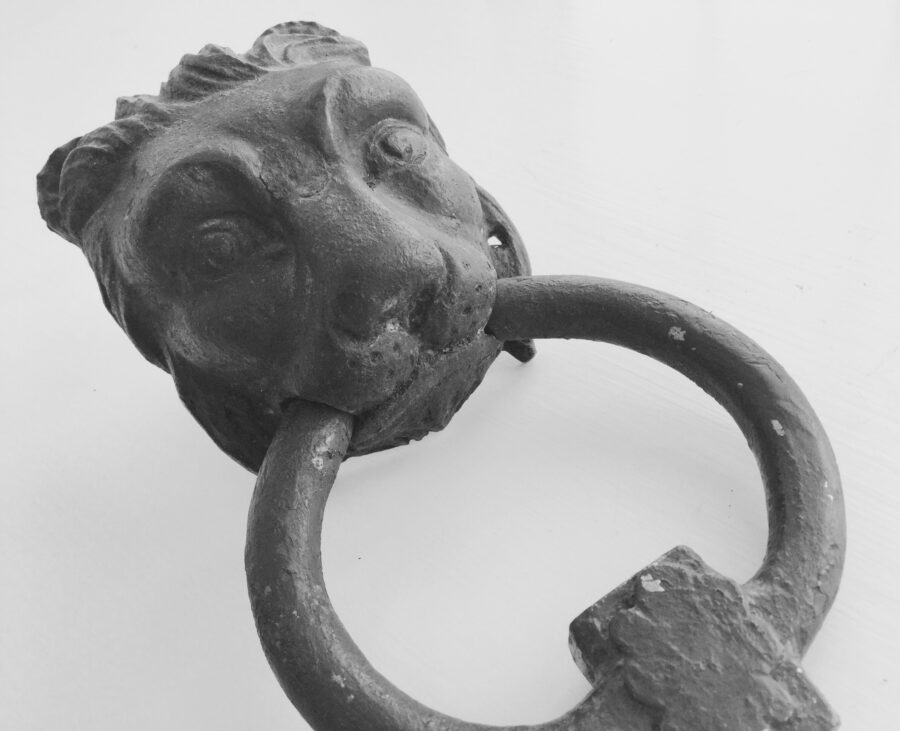
It may sound strange when one is used to the continuous upward windings of the Spiral Ramp, but it was actually once divided into not just one, but two, and perhaps even three sections.
Knocking with a Doorknocker
If we start from above, it looks like the Spiral Ramp was parted just before the current wooden staircase. The staircase is of more recent date and we do not know much about how this particular spot in the Spiral Ramp has changed over time. However, it was somewhere close to here that the doorkeeper’s official residence was located for a time and where he or she would be summoned if one needed to go further up to the viewing platform.
“Strangers pay some skillings to the bell ringer that lives there in order to pass through a closed gate by the wooden staircase”, it is thus described in a travelogue from 1806. Half a century later, the situation is portrayed in a similar manner in a description of Copenhagen that says, “Just before the top, this unusual stairway ends by a cubicle, which is opened by a doorkeeper when one knocks with a doorknocker. And now, a pleasantly wide wooden staircase, which is followed by a small and narrow stone staircase, leads up to the flat roof, platform or terrace”.
A Little Further Down Than the Top
In 1902, engineer Lorenzen’s automobile did, however, not make it all the way up to the current wooden staircase, which had replaced one that was built a little differently. In 1822, the Round Tower underwent major renovations, during which “a distinctive partition with a suitable entrance door was built, so that the topmost part of the tower was sealed off for astronomical purposes,” the astronomer Georg Frederik Ursin (1797-1849) wrote a few years later and then continued, “Many of the older instruments could be placed in the spacious room that was now gained, and even though they might not be fit for use anymore they always possess historical value”.
“Some decades later, another partition really was constructed”
The new partition wall was placed a little further up than the entrance to the Bell Loft and was therefore only with the creative abilities of Illustrated News located at “the topmost part of the tower”, as the magazine claimed in its description of Lorenzen’s car ride. The magazine shows a photograph of the car, behind which the previously mentioned double door is clearly visible. It is even possible to catch a glimpse of one of the doorknockers that are shaped like lion heads and still exist in the Round Tower’s collection.
One More Barrier, Please!
The engineer’s automobile could not get any further and, ostensibly, tourists in the tower also had to make a halt here from time to time. An account thus states that when the philosopher Henrik Steffens (1773-1845) and the sculptor Bertel Thorvaldsen (1770-1844) visited the Round Tower in 1840, Steffens wrote their names on the wall “next to the first blocked door, where one is stopped”. The following year, when complaints about the lack of accessibility are put forward in the weekly magazine The Police Friend (Politievennen), it is, however, not entirely clear whether the obstacle that is mentioned is the partition from 1822, which is located approximately in the middle of the tower, or if it is the gate next to the porter’s lodge, which was empty at the time.
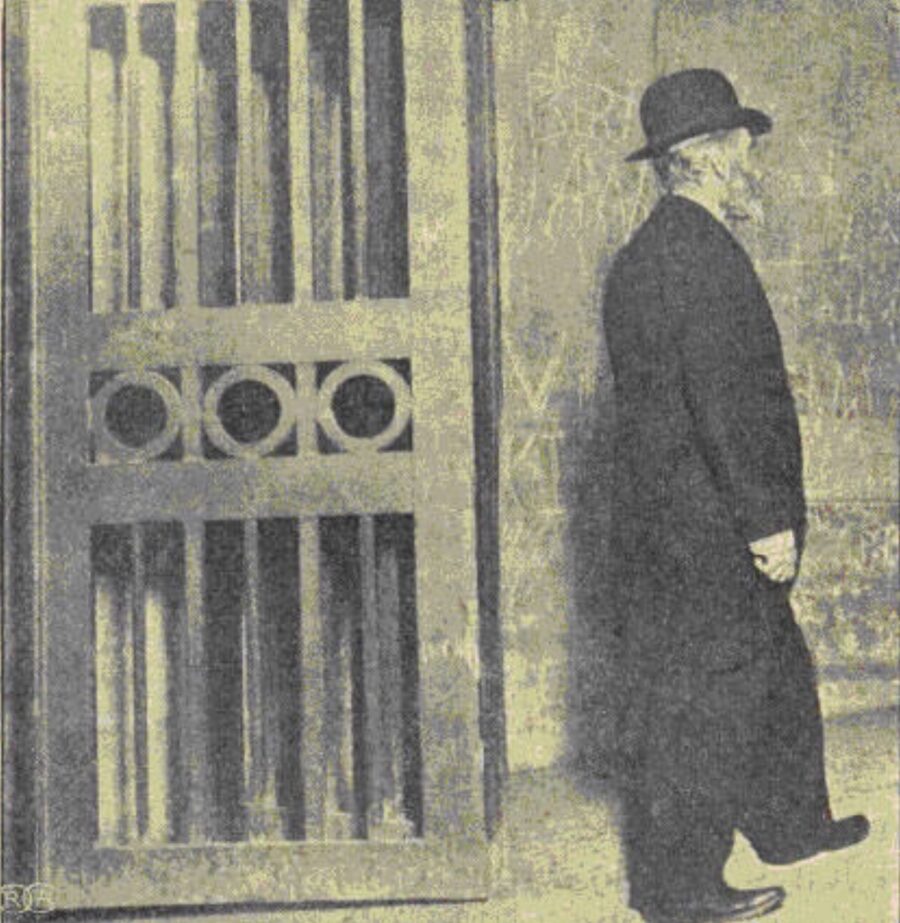
“Last week, the informer walked up the Round Tower with two travelling Swedish gentlemen after they had demanded to see this extraordinary edifice, which is world-famous for its construction, so that they could enjoy the spectacular sight that the view from the uppermost part of the tower offers its guests,” says The Police Friend. “But when they arrived at the door, through which one was previously allowed access to the uppermost part of the tower in return of disbursing 2 skillings, it remained closed, notwithstanding all the knocking and commotion, and we had to return without accomplishing our mission”.
The poor sightseeing conditions do not make the complainer ask for a removal of the partition. Instead, he takes the opportunity to suggest a renovation of the lower windings of the Spiral Ramp, in which the street kids are playing ball. “When this is done,” he writes, “the access to the bottom of the tower should be blocked like it is at the top, with the exception of the hours during which the University Library is open, where a man ought to stand by the entrance in order to keep boys and ragamuffins from practicing their wickedness there”.
Foldable Wall
Some decades later, another partition really was constructed, this time in the form of a “wooden railing” just above the entrance to the Trinity Church’s organ loft. Allegedly, it happened around 1870, which fits well with the fact that there was no longer a need for free access to the University Library at that time, since the library was moved in 1861.
There is no absolute certainty about when the two, or three, partition walls were removed, but the two lower ones, at least, seem to have disappeared during a renovation in 1921-22, even though the lower one, oddly enough, still figures on some drawings that were based on measurements made by the Round Tower in 1923-25.
Whatever the case, the lower partition – the wooden railing – also existed when engineer Lorenzen drove up and down the Spiral Ramp in his car. Apparently, the wall was foldable, thus making it possible for the engineer to continue up the windings. Otherwise, to be sure, you could hardly claim that he had taken up the battle against Peter the Great.
